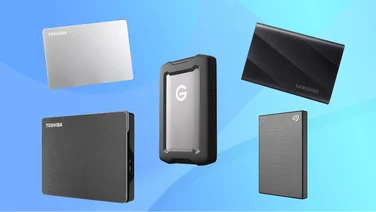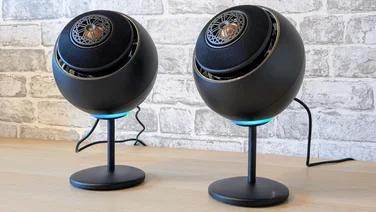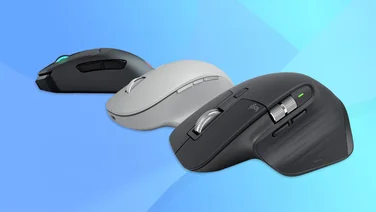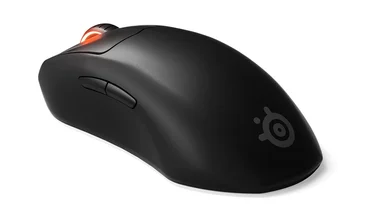To help us provide you with free impartial advice, we may earn a commission if you buy through links on our site. Learn more

- Fairly portable
- Impressive number of USB2 ports
- Cheap
- Cheaply made
- Not designed for sustained use
The Raspberry Pi series of single-board micro PCs has always offered respectable compatibility with Windows keyboards, despite them not being Windows computers themselves. In other words, if you’re embarking on a Pi project, you don’t need to spend extra on proprietary peripherals, and should be able to get by with any HID (Human Interface Device) wired or Bluetooth keyboard.
Even so, to accompany the release of the new Raspberry Pi 4 Model B, the Raspberry Pi Foundation has launched its very own set of peripherals. This includes the Raspberry Pi Keyboard, a slim little tenkeyless number that costs only £16.
Raspberry Pi Keyboard review: Design
Despite its apparent lack of necessity, compatibility-wise, bringing out an official keyboard for the Pi 4 Model B makes a particular kind of sense. With its improved performance and upgraded connectivity, it’s the most viable Raspberry Pi yet to use as an everyday desktop replacement and, unlike more esoteric uses of the tiny computer (such as turning it into a portable games console, remote-controlled robot or homemade security camera), desktop duty demands a keyboard be installed at all times. The white top and pinkish-red underside also make it a perfect match for the official Raspberry Pi case for both the Raspberry Pi 4 version and previous models.
The rock-bottom price also appears to be in keeping with the traditions of the Raspberry Pi. However, while the small outlay for these computers has always been a mark of great value considering how far your £34 would stretch otherwise, there are no surprises as to why the Raspberry Pi Keyboard is so cheap. It’s basic in the extreme, built entirely from light plastics and having the unmistakably dull feel of a membrane keyboard.
Raspberry Pi Keyboard review: Performance
The layout attempts to emulate Apple’s slimline keyboards, with flat chiclet keys. Credit where it’s due, this helps maintain a nice low-profile aesthetic, and the keys are adequately spaced; overall, it’s about the same width as a 13in laptop keyboard. Still, it lacks a certain crispness. Although chiclet keys such as this tend to have a mechanical element in their scissor switches, typing long paragraphs on the Raspberry Pi Keyboard is unsatisfying. There’s a hollowness to the whole thing, largely inflicted by the cheap materials, and not helped by the lack of tactile or audible feedback.
Often this can be a good thing to those who prefer quieter operation, but the Raspberry Pi Keyboard isn’t fully silent: unless you’re pressing very lightly, hammering at the keys makes a rattling sound, as if all the internal components are creaking under your fingers.

At some points, the Raspberry Pi Keyboard became actively irritating. There are just two thin rubber feet on the underside, and one of them was somehow more effective than the other; we’d notice the whole keyboard slowly sliding upwards as we typed, with the left foot losing grip while the right acted as a pivot point. We weren’t using a particularly slick surface either, just a wooden desk.
Raspberry Pi Keyboard review: Features
There’s also no height adjustment, so the default typing angle is the only one you get, and there’s nothing in the way of bonus keys or key functionality. In fairness, the latter is understandable for a Raspberry Pi peripheral specifically: the Raspbian OS doesn’t support keyboard media controls unless you make some tweaks via the trigger-happy daemon. Still, the option of having volume and mute controls isn’t even given via the function keys – worth knowing if you were considering this as a cheap Windows keyboard option – and there’s a lot of doubling-up on key functions in order to include everything. F11 and F12, for example, are relegated to being sub-functions on the F1 and F2 keys.
READ NEXT: Raspberry Pi 4 review
Even with its low price, then, the Raspberry Pi Keyboard doesn’t initially shape up as a very desirable choice. For use with a Raspberry Pi specifically, it being a wired model (rather than connecting via Bluetooth) might also seem a problem – when you’ve only got four full-size USB ports on the computer, permanently occupying one with a keyboard doesn’t sound like the wisest idea.
However, this brings us to what just about rescues the Raspberry Pi Keyboard: its three USB2 pass-through ports. Use them, and you’re actually adding to the Raspberry Pi’s USB connectivity, as they can both charge other devices and transfer data. You’d be lucky to get two such ports on a top-of-the-line gaming keyboard, so to have three on a budget board such as this is outstanding.
Regarding the keyboard’s own USB cable, you might have to be mindful about where you keep your Raspberry Pi (or Windows PC), as it’s only 1m long. It is detachable, however, which further improves the Raspberry Pi Keyboard’s already considerable portability. Its lightness might not help it keep a grip, but it’s easy to throw in a bag and take on the road. This, again, ties in nicely with the Raspberry Pi series, which are all far easier to transport than a desktop PC or even a laptop.
Raspberry Pi Keyboard review: Verdict
That’s where the Raspberry Pi Keyboard is best suited: not permanently stationed on a desk, but taken along with a small computer for trips. It’s not up to the task of serious typing, which is unfortunate, and build quality could be better even at such an affordable price, but the Raspberry Pi Keyboard’s portability and built-in connectivity ensure it can still be of some niche use.





